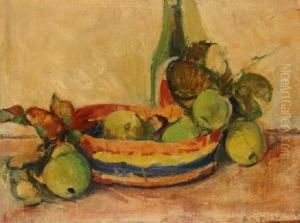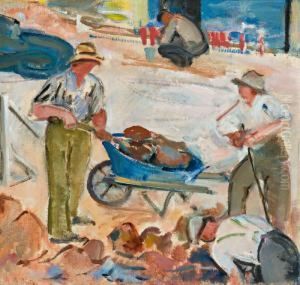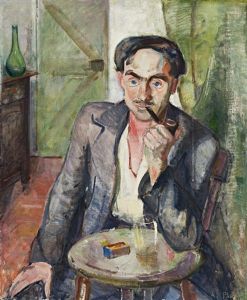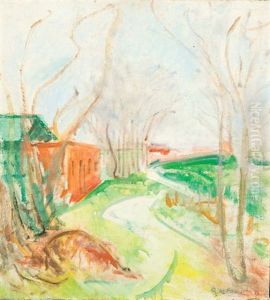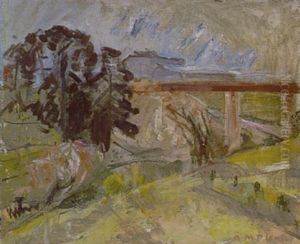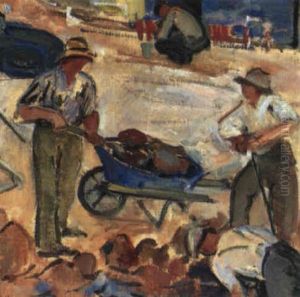Ada May Plante Paintings
Ada May Plante was an Australian artist known for her contribution to painting, particularly in the realm of portraiture and still life. Born in Melbourne, Victoria, in 1875, Plante grew up in an era when the opportunities for female artists were limited, yet she managed to forge a significant career in the arts, demonstrating her resilience and dedication to her craft. Plante's artistic journey began in earnest when she enrolled at the National Gallery of Victoria Art School, an institution that played a crucial role in her development as an artist. Under the tutelage of Frederick McCubbin and Bernard Hall, Plante honed her skills, particularly in the realm of portraiture, for which she would later gain considerable acclaim.
Throughout her career, Ada May Plante achieved several milestones that underscored her talent and commitment to art. Notably, she was a member of the Victorian Artists' Society and the Melbourne Society of Women Painters and Sculptors, two organizations that were instrumental in promoting the work of artists at the time. Plante's work was regularly exhibited at these societies, as well as the prestigious Royal Academy in London, indicating her international recognition.
Plante's style was characterized by a keen attention to detail, a vibrant palette, and a deep understanding of her subjects, which allowed her to capture more than just their physical likeness. Her still life paintings, in particular, are celebrated for their intricate composition and the ability to evoke the beauty in everyday objects. Despite the challenges she faced as a woman in a male-dominated field, Plante's work was well-received by critics and the public alike, securing her a place in Australia's art history.
Ada May Plante's legacy is not just in the paintings she left behind but also in the path she paved for future generations of female artists in Australia. She passed away in 1950, but her contributions to the Australian art scene continue to be celebrated. Her works are held in several public collections, including the National Gallery of Victoria, testament to her enduring influence and the high regard in which she is held in the art community.
